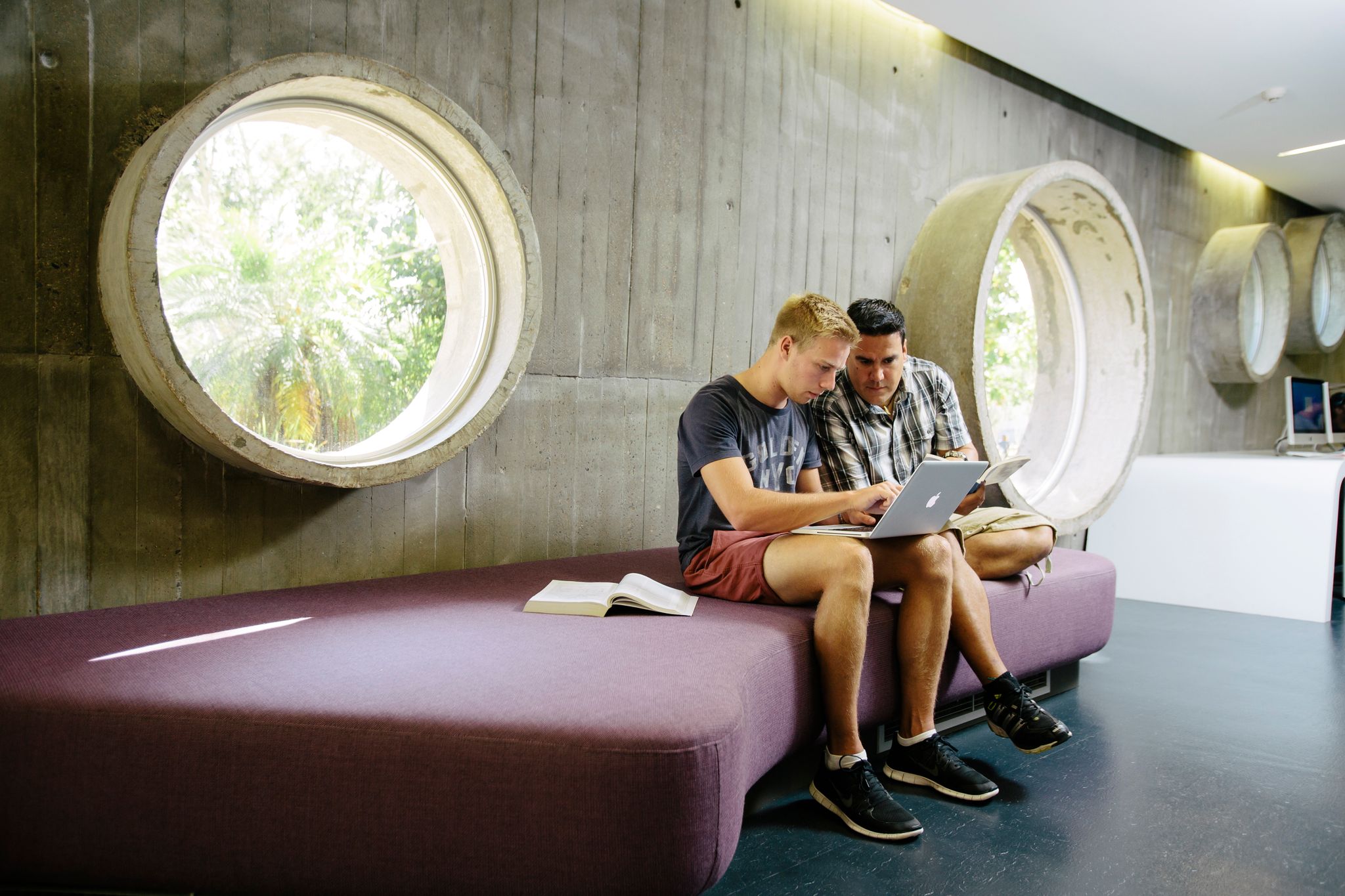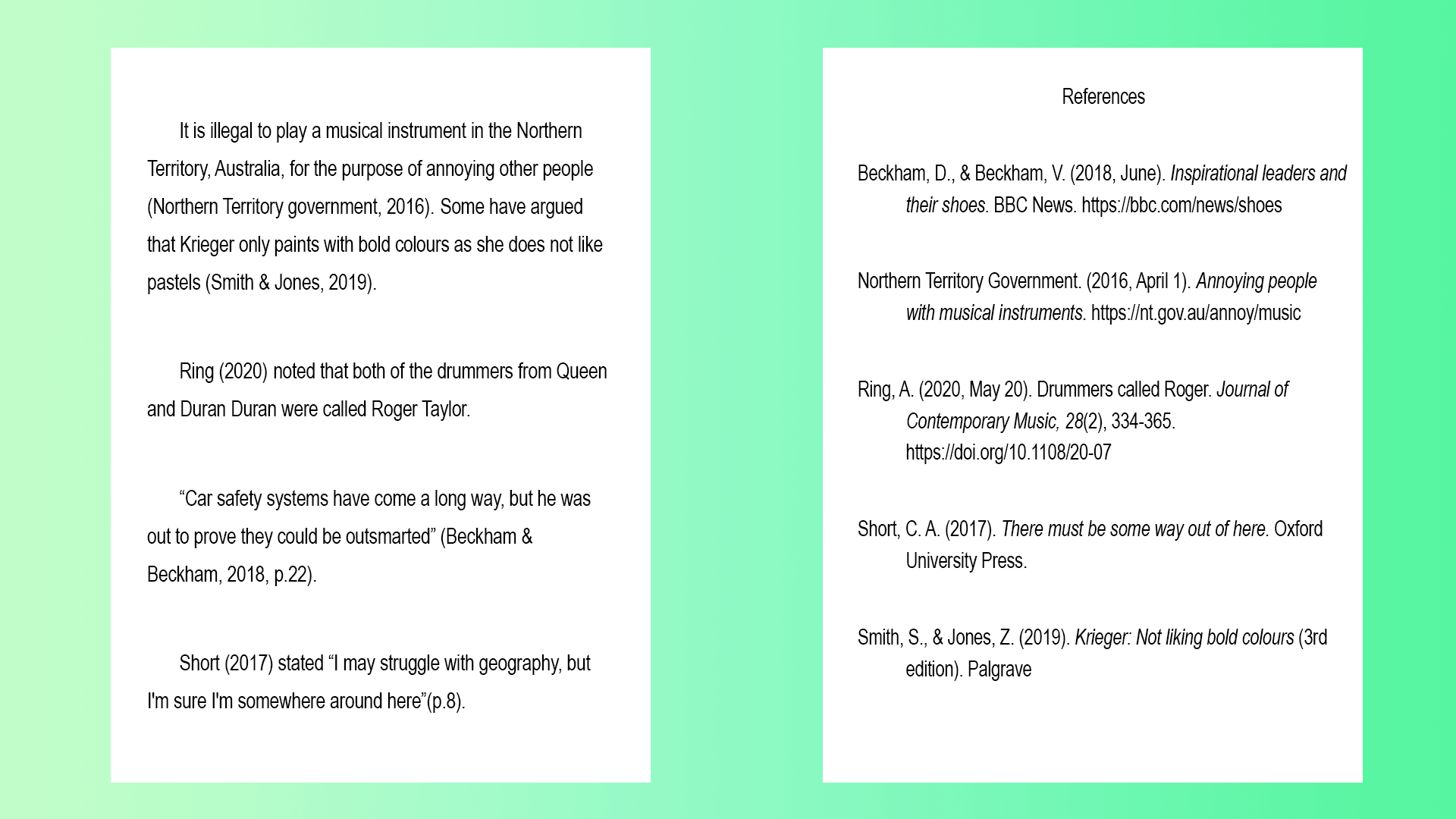Integrity at University
Rhian Morgan

Introduction
You will probably encounter the term “academic integrity” frequently while you are a student. Understanding and applying academic integrity is essential for success at university. This chapter will explain the essence of academic integrity. It will then focus on referencing, as referencing is a key skill that demonstrates academic integrity. This will be followed by a discussion of threats to your academic integrity and actions you can take to support and demonstrate integrity.
What is Academic Integrity?
“Academic integrity means acting with the values of honesty, trust, fairness, respect and responsibility in learning, teaching and research” (Exemplary Academic Integrity Project, 2013).
Academic integrity is honest, respectful, and ethical behaviour within the university environment. Examples include using references to show where the information you are using comes from and ensuring all the work you submit is your own original content.
Acknowledging your Sources

When you refer to someone else’s ideas, work, or data within your assignments, you need to acknowledge the original source by using references. Referencing:
- Demonstrates academic integrity;
- Allows you to provide evidence to support your ideas;
- Shows that your work is based on reliable information; and
- Allows others to verify the information you have provided.
There are two main types of references that should be included in your work:
- In-text citations should be provided throughout your work; and
- A reference list with details of the sources you have used should be added at the end of your work.
For example, when using an author-date referencing style, in-text citations are often provided in brackets at the end of the sentence, e.g. Digital literacy skills allow students to take advantage of flexible and distance learning opportunities (Yang, Catterall & Davis, 2013). The authors’ names and the date of the work cited may also be written as part of the sentence, e.g. Yang, Catterall, and Davis (2013) argued that digital literacy skills allow students to take advantage of flexible and distance learning opportunities. The reference list at the end of the assignment would then list the full bibliographic details of the works you have cited in alphabetical order.

There are lots of different referencing styles and your subject outline will provide guidance on the style you should be using in your assignments. The JCU Library’s Referencing Guide will help you work out how to use each referencing style correctly.
When do I have to Reference?
You need to provide references whenever you use someone else’s work, ideas, words, content, or data. Anything that is not your own original content needs to be referenced. This includes direct quotes, where you have used the exact wording provided in the original source. Direct quotes also need to be placed in quotation marks, e.g. Algorithmic logics “organize the space and flow of interaction” (Caliandro, 2018, p. 557). You also need to reference any content that you have paraphrased (put into your own words) or summarised, e.g. Social networks are complex assemblages of users, algorithms, and data (Pearce, 2018). It is also important to reference any images, media, statistics, or graphs that you use in your work.
Using correct referencing will help demonstrate academic integrity, but it is not the only behaviour to consider. There are some behaviours that you should avoid. Threats to your academic integrity include plagiarism, self-plagiarism, and collusion (TEQSA, 2019, p. 3).
Plagiarism
Plagiarism is the accidental or deliberate use of other people’s work without sufficient attribution. In effect, you are claiming someone else’s work as your own. Accidental plagiarism can be avoided by using effective notetaking practices (see the chapter Notetaking). Notetaking will ensure you have the details needed to accurately report and attribute the resources you use. Paraphrasing – or rewriting the original ideas in your own words – is also required. Paraphrasing allows you to focus on aspects of an original work that support your arguments and to synthesise from multiple sources of information (APA, 2019). See the chapter Writing Assignments for more on paraphrasing.
Self-plagiarism
Self-plagiarism is the re-use of your own work in a subsequent assignment. At first glance, this may appear to be an efficient use of your time and effort. However, self-plagiarism does not demonstrate that you have learned anything new. Likewise, self-plagiarism does not show that you have achieved the expected outcomes of your course. You can use the same sources of information, but to avoid self-plagiarism you will need to write a new assignment to address the new topic, question, or perspective.
Collusion
Collusion occurs when a student works with others – students, friends, paid tutors, family members – and then submits that shared work as if it is their own original work (Crook & Nixon, 2018).

Working with others and discussing the content of a course or the requirements of an assignment can be productive, helpful, and enjoyable. However, the final submission for an individual piece of assessment must be your own. This does not mean that you cannot work with your peers, discuss subject material, study together, or help each other with proof-reading, but you must not:
- Provide work for another student to submit as part of their own assignment;
- Use other students’ content in your own assignment;
- Co-write individual assessment items; or
- Provide others with answers to quizzes, essay topics, or tests.
Setting clear expectations regarding peer-feedback and making sure you understand the requirements of your assessment tasks can help you avoid collusion. The university provides resources to help you with your academic integrity. These resources include the referencing guide, writing guide, and assignment writing resources. You will also have the opportunity to check drafts of your work using the university’s text matching program, SafeAssign.
SafeAssign

SafeAssign is a text matching program that is linked to assessment submission boxes in LearnJCU. This tool searches the internet and university assessment repositories to find any text in your assignment that matches with other sources, including websites, scholarly literature, and other student assignments. You will often have the opportunity to submit a draft assignment to SafeAssign before you submit your final assignment. Use of this software will generate a report and alert you to any text matches. This will allow you to use your referencing and paraphrasing skills to correctly attribute all the ideas in your work, make sure all your quotes are in quotation marks, and avoid plagiarism.
Conclusion
Academic integrity governs all that you do at university. Academic integrity is made visible by the accurate attribution of ideas, images, or other information you use in your work according to the rules of your university’s preferred referencing style. It is also important to only submit your own original work for assessment, or to clarify the contributions of others where relevant. When reading your work, your lecturer should be able to identify the ideas that you used to support your thinking and be confident that anything else is your personal contribution. Being diligent with referencing, and only submitting work that is your own, are two clear ways to act with academic integrity.
Key points
- Academic integrity requires the honest, respectful, and ethical use of information.
- Cite and reference all your information sources as described by your university referencing guides.
- Provide a citation every time you use someone else’s ideas, words, diagrams, audio, or other information.
- When sharing work with peers, provide clear instructions regarding the feedback you are seeking.
- Plagiarism and collusion undermines the value of your degree and leaves you vulnerable to academic penalties.
References
American Psychological Association. (2019). Paraphrasing. https://apastyle.apa.org/style-grammar-guidelines/citations/paraphrasing
Crook, C., & Nixon, E. (2019). The social anatomy of ‘collusion’. British Educational Research Journal, 45(2), 388-406. https://doi.org/10.1002/berj.3504
Exemplary Academic Integrity Project: Embedding and extending exemplary academic integrity policy and support frameworks across the higher education sector (2013). Plain English definition of academic integrity. Office for Learning and Teaching Strategic Commissioned Project 2012-2013. http:www.unisa.edu.au/EAIP
Lancaster, T. (October 20, 2016). ‘It’s not a victimless crime’ – the murky business of buying academic essays. The Guardian. https://www.theguardian.com/higher-education-network/2016/oct/19/its-not-a-victimless-the-murky-business-of-buying-academic-essays
Tertiary Education Quality and Standards Agency. (2019). Guidance note: Academic integrity. https://www.teqsa.gov.au/latest-news/publications/guidance-note-academic-integrity

